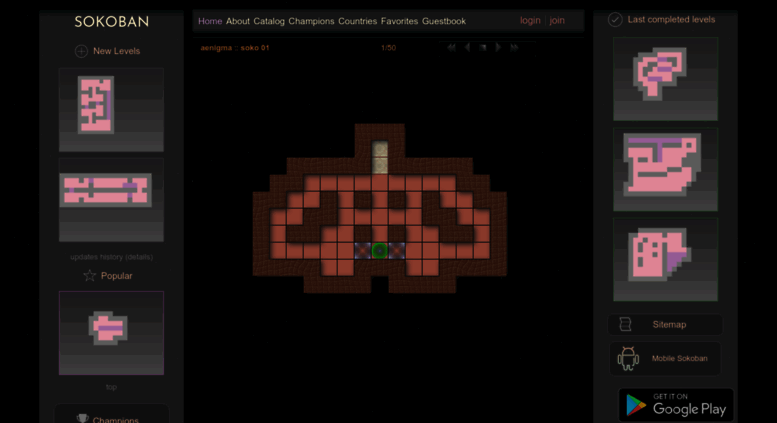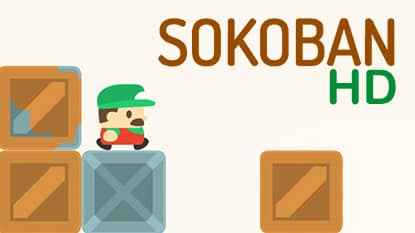Sokoban Online
Online SOKOBAN logic game. State on 03 February 2021 18:43 GMT. THE BEST PLAYERS; completed: levels: moves: pushes: A1master. Cave Sokoban is an online Kids game, it's playable on all smartphones or tablets, such as iPhone, iPad, Samsung and other Apple and android system. Cave Sokoban is a retro puzzle game. Sokoban is a classic kind of game. You are in a cave, there are some boxes. You need to figure out how to push those boxes into the positions.
Sokoban - 50 Levels of The Popular Warehouse Puzzle Game
HTML5 Game

Your avatar is a little girl called Florinda who walks the labyrinths of 50 different mazes and pushes boxes with flowers to place them on radioactive marked areas. One of the skills that you will develop and need to solve these puzzles is 'critical thinking', defined as the ability to think clearly and rationally, understanding the logical connection between ideas.
In the year 1605 Sir Francis Bacon wrote: 'Critical thinking is a desire to seek, patience to doubt, fondness to meditate, slowness to assert, readiness to consider, carefulness to dispose and set in order; and hatred for every kind of imposture.' It is amazing how almost all of his thoughts applies to the process to solve sokoban puzzles.
Critical Thinking help us to acquire a means of assessing and develop our abnility to judge well. It will be easy for us to figure out the logic of events and make us better decision makers. Ok, we do not know exactly how the mind works, but I am sure we agree that there is a big difference between playing a dumb crash down game and a challenging puzzle where you have to think and develop useful skills like logic and deductive reasoning.

Sokoban Online Game
Use de arrow keys of your keyboard or press the arrows in the menu to move the girl. All the menu options have descriptive titles.

Class subject: Sokoban Game Rules:
Sokoban ('warehouse keeper') is a type of puzzle video game, in which the player pushes crates or boxes around in a warehouse, trying to get them to storage locations.Sokoban was created in 1981 by Hiroyuki Imabayashi, and published in December 1982 by Thinking Rabbit, a software house based in Takarazuka, Japan. The game is played on a board of squares, where each square is a floor or a wall. Some floor squares contain boxes, and some floor squares are marked as storage locations.The player is confined to the board, and may move horizontally or vertically onto empty squares (never through walls or boxes). The player can also move into a box, which pushes it into the square beyond. Boxes may not be pushed into other boxes or walls, and they cannot be pulled. The number of boxes is equal to the number of storage locations. The puzzle is solved when all boxes are at storage locations. Sokoban can be studied using the theory of computational complexity. The problem of solving Sokoban puzzles has been proven to be NP-hard. Further work showed that it was significantly more difficult than NP problems; it is PSPACE-complete. This is also interesting for artificial intelligence researchers, because solving Sokoban can be compared to the automated planning that needs to be done by a robot that moves boxes in a warehouse.Sokoban is difficult not only due to its branching factor (which is comparable to chess), but also its enormous search tree depth; some levels can be extended indefinitely, with each iteration requiring an exponentially growing number of moves and pushes. Skilled human players rely mostly on heuristics; they are usually able to quickly discard futile or redundant lines of play, and recognize patterns and subgoals, drastically cutting down on the amount of search.Some Sokoban puzzles can be solved automatically by using a single-agent search algorithm, such as IDA, enhanced by several techniques which make use of domain-specific knowledge. This is the method used by Rolling Stone, a Sokoban solver developed by the University of Alberta GAMES Group. The more complex Sokoban levels are, however, out of reach even for the best automated solvers. |

